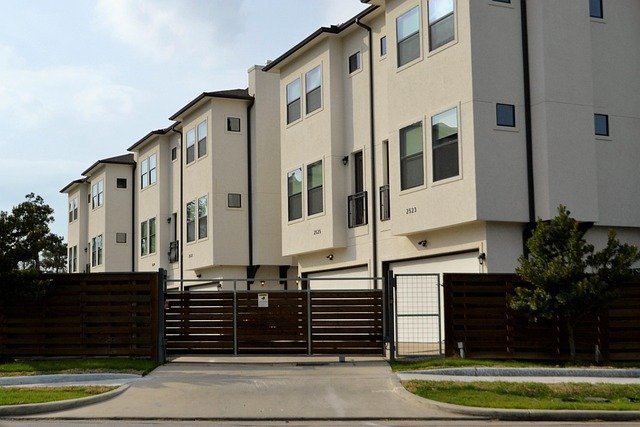Housing Association Homes in the UK: A Practical Guide
Housing association properties play a key role in providing affordable housing across the UK. This practical guide explains how the system works, who qualifies, and what steps are needed to apply. Readers will gain insights into tenancy types, application procedures, and what to expect as a tenant. Whether you're new to the system or exploring alternative housing options, this overview helps clarify a complex but essential part of the UK housing landscape.

What Are the Eligibility Criteria for Housing Association Homes?
To qualify for housing association accommodation, you must meet specific eligibility requirements that vary slightly between different local authorities and housing associations. Generally, you need to be aged 18 or over and have a legal right to remain in the UK. Priority is typically given to those with the greatest housing need, including homeless individuals, people living in overcrowded conditions, those with medical needs requiring specific accommodation, and individuals escaping domestic violence.
Local authorities use a points-based system or banding system to assess housing need. Factors considered include your current living situation, family size, income level, and any special circumstances such as disability or vulnerability. Some housing associations also have residency requirements, meaning you may need to have lived or worked in a particular area for a specified period before becoming eligible for their properties.
How to Apply for Social Housing in the UK
The application process for social housing begins with registering on your local authority’s housing register, also known as the housing waiting list. You can typically apply online through your council’s website, though some areas still accept paper applications. The application requires detailed information about your current circumstances, including your housing situation, income, family composition, and any special needs.
Once registered, you will be placed in a priority band based on your level of housing need. The waiting time for accommodation varies significantly depending on your location, priority level, and the type of property you require. In high-demand areas, waiting times can extend to several years. Some housing associations also maintain their own waiting lists for specific developments or particular client groups, which may offer additional opportunities for suitable accommodation.
Key Differences Between Housing Association and Council Housing
While both housing associations and councils provide social housing, there are important distinctions between these providers. Council housing is owned and managed directly by local authorities, whereas housing associations are independent, not-for-profit organisations that work in partnership with councils and government agencies. Housing associations often have more flexibility in their operations and may offer additional services such as employment support, financial advice, or community development programs.
Rent levels can differ between the two types of social housing. Council rents are typically lower than housing association rents, though both remain significantly below market rates. Housing associations may also offer different types of tenancies, including shared ownership schemes where tenants can purchase a percentage of their home while paying reduced rent on the remaining portion. Additionally, housing associations often specialise in serving particular groups, such as older people, individuals with learning disabilities, or people recovering from homelessness.
Understanding Tenant Rights and Responsibilities
Social housing tenants have specific rights and responsibilities outlined in their tenancy agreements. Key rights include security of tenure, meaning you cannot be evicted without proper legal grounds and procedures being followed. Tenants also have the right to a decent, well-maintained home and can request repairs when needed. The Right to Buy scheme allows eligible council tenants to purchase their homes at a discount, though this right does not typically extend to housing association properties.
Tenant responsibilities include paying rent and service charges on time, keeping the property in good condition, and not causing nuisance to neighbours. You must also seek permission before making significant alterations to the property and report any necessary repairs promptly. Many housing associations provide tenant handbooks that clearly outline these rights and responsibilities, along with information about complaint procedures and additional support services available.
Common Challenges in Accessing Affordable Housing
The demand for affordable housing significantly exceeds supply across most of the UK, creating substantial challenges for those seeking social housing. Long waiting lists are perhaps the most significant obstacle, with some applicants waiting many years before being offered suitable accommodation. Competition is particularly intense for larger family homes and properties in desirable locations.
| Housing Association | Property Types | Average Weekly Rent Range |
|---|---|---|
| Clarion Housing Group | 1-4 bedroom homes, older persons housing | £80-£180 |
| L&Q (London & Quadrant) | Flats, houses, shared ownership | £90-£200 |
| Places for People | General needs, supported housing | £75-£170 |
| Sanctuary Housing | Family homes, specialist accommodation | £85-£190 |
Prices, rates, or cost estimates mentioned in this article are based on the latest available information but may change over time. Independent research is advised before making financial decisions.
Another challenge involves navigating complex application systems and understanding priority criteria. Many potential applicants are unaware of their options or struggle with lengthy application forms and supporting documentation requirements. Limited choice is also an issue, as successful applicants typically receive only one offer of accommodation, which they must accept or risk losing their place on the waiting list.
Housing associations and councils are working to address these challenges through various initiatives, including developing new properties, improving application processes, and providing better information and support to applicants. However, the fundamental issue of insufficient affordable housing supply relative to demand continues to affect access for many people seeking secure, affordable accommodation across the UK.




